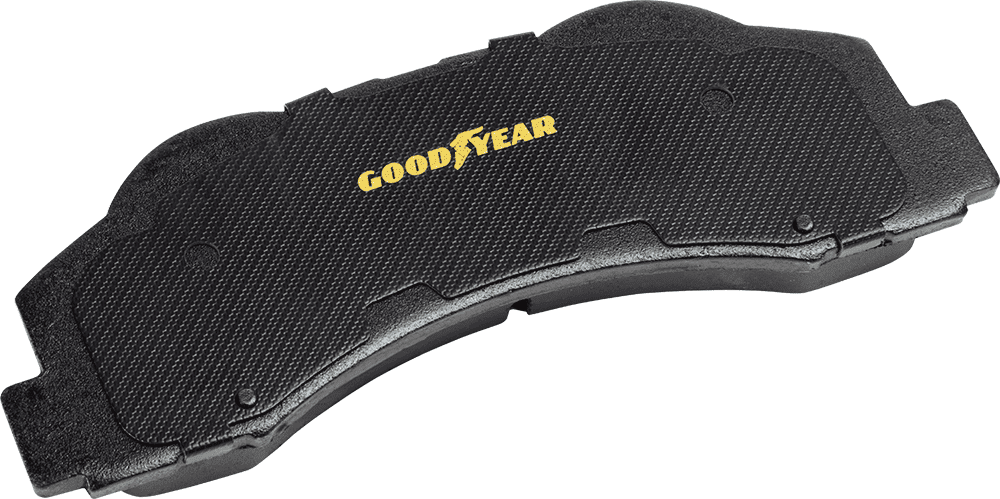Vehicle manufacturers use different brake pad friction materials in manufacturing brake pads. Here’s a look at organic material brake pads.
Organic material brake pads are the quietest and least expensive. These brake pads contain no metal or ceramic materials.
Asbestos brake pads were used up to the 1970s and 1980s when the health hazards of asbestos came to light. Brake manufacturers turned to other formulas without asbestos.
Organic brakes pads carry the designation”NAO” which stands for non-asbestos organic brake pads. Because asbestos is an organic material mined in several countries, manufacturers have to let consumers know the asbestos was removed.
Other ingredients used in manufacturing organic brake pads include:
- Carbon
- Rubber
- Kevlar Fibers
- Fiberglass
- Others
Whatever combination is used, these ingredients are mixed with resin and pressure to produce a modern organic brake pad.
Organic pads are some of the most popular brake pads on the market, and many new cars have them.
Organic Brake Pad Advantages
- Quiet. Because these pads don’t contain metal or ceramic components, organic pads remain quiet throughout their useful life.
- Dust. Organic pads create less dust compared with semi-metallic pads, so wheels stay cleaner.
- Feel. Because of the lack of metal to “bite” into the rotor, organic pads give a soft and smooth feel through the brake pedal.
- Less Friction and Heat. Organic pads do not need as much heat to operate effectively, so they create less heat when activated. For this reason, they are ideal for low-performance conditions like commuting.
- Rotor wear. Because organic pads are soft and generate less heat, they are gentle on the rotors. Brake rotors last longer, saving money.
- Cost. Organic pads are cheaper to buy than semi-metallic and ceramic pads. People on a budget who drive under normal conditions prefer organic brake pads.
Organic Brake Pad Disadvantages
- Wear. Organic pads wear out faster than semi-metallic or ceramic pads, requiring more frequent replacements over time.
- Performance Limits. Organic pads do not perform well under the extreme temperatures generated by high performance, hauling loads, or towing. The extreme heat can cause the pads to glaze over, resulting in brake fade and increased stopping distance.
- Driver awareness. As organic pads wear down, a driver has to increase pressure on the brake pedal to get the same performance. If drivers don’t pay attention, they could create a ‘panic’ stop.
About Goodyear Brakes
Goodyear Brakes manufactures premium quality brake bundles, calipers, rotors, brake pads and all the hardware required to successfully install brakes, all backed by a national warranty, decades of production experience and one of the best-known names in automotive excellence. The brake pads are manufactured in the USA using a proprietary green production process by a company with more than 50 years of experience in friction science. The Goodyear Brakes product line is available through Goodyear Brakes at Amazon, CarID, Buy Brakes and AutoAnything.
Goodyear (and Winged Foot Design) and Blimp Design are trademarks of The Goodyear Tire & Rubber Company used under license by FDP Virginia Inc., 1076 Airport Road, Tappahannock, VA 22560, USA. Copyright 2020 The Goodyear Tire & Rubber Company. Goodyear Brakes and FDP Virginia are not responsible for its products when they are subjected to improper applications, installation, or accident.
Blogs
Brake Pad Friction Material: Organic
Resources Vehicle manufacturers use different brake pad friction materials in manufacturing brake pads. Here’s a look at organic material brake pads. Organic material brake pads
Brake Pad Friction Material: Ceramic
Resources Understanding the advantages of various friction materials allows you to choose the right material for your vehicle’s brakes. The use of clay and porcelain
Vehicle Brake Pads History
Resources For car and history buffs alike, the history of brake pads is fascinating. Here’s a short look at some interesting highlights. American vehicle manufacturers




